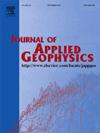基于航磁资料的超镁铁性岩石人工神经网络识别方法
IF 2.1
3区 地球科学
Q2 GEOSCIENCES, MULTIDISCIPLINARY
引用次数: 0
摘要
铜镍资源是面临全球供应短缺的具有重要战略意义的矿产品,因此对其进行勘探特别有价值。岩浆CuNi硫化物矿床通常发生在具有明显磁性特征的超镁铁质岩石杂岩中。高分辨率航磁测量已被证明可以有效地绘制这些与超镁铁质岩性相关的磁异常的空间分布。目前的解释方法主要依赖于经验专家分析岩性圈定,特别是在识别隐伏侵入体时。然而,采用智能算法通过航磁数据分析自动检测超镁铁性岩石的系统方法仍然不发达。介绍了一种基于航磁资料的超镁质岩石填图人工神经网络方法。处理后的磁性数据归一化到相似的范围,并用作机器学习模型的输入特征向量。通过对已知超镁铁性岩石数据的训练得到最终模型参数后,利用全连接神经网络模型对未知区域的超镁铁性岩石分布进行预测。设计了多种理论模型,对磁数据集进行了计算,验证了数据处理的规律性和模型预测的有效性。结果表明,数据归一化和特征向量的选择对预测结果有显著影响。在不同的空间分辨率和噪声水平下,对该方法的预测精度和稳定性进行了测试。最后,将该方法应用于祁连北部地区。与专家解释结果相比,超镁质岩预测精度可达80%以上。其中,两个超镁铁性岩体的预测结果经现场调查证实,证明了该方法的有效性。本文的预测结果可为超镁质岩圈定提供客观依据,进一步集中CuNi矿床找矿靶区。本文章由计算机程序翻译,如有差异,请以英文原文为准。
Identifying ultramafic rocks using artificial neural network method based on aeromagnetic data
Copper‑nickel (Cu![]() Ni) resources represent strategically critical mineral commodities facing global supply shortages, making their exploration particularly valuable. Magmatic Cu
Ni) resources represent strategically critical mineral commodities facing global supply shortages, making their exploration particularly valuable. Magmatic Cu![]() Ni sulfide deposits typically occur within ultramafic rock complexes that exhibit distinct magnetic signatures. High-resolution aeromagnetic surveys have proven effective in mapping the spatial distribution of these magnetic anomalies associated with ultramafic lithologies. Current interpretation methodologies predominantly rely on empirical expert analysis for lithological delineation, particularly when identifying concealed intrusions. Nevertheless, systematic approaches employing intelligent algorithms for automated detection of ultramafic rocks through aeromagnetic data analysis remain underdeveloped. This research introduces an Artificial Neural Network (ANN) method for ultramafic rock mapping based on aeromagnetic data. The processed magnetic data is normalized to a similar range and utilized as input feature vectors into machine learning models. After obtaining the final model parameters through training the known ultramafic rock data, the fully connected neural network model predicts the distribution of ultramafic rocks in the unknown region. Various theoretical models were designed to calculate magnetic datasets and test the regularity of data processing and effectiveness of model prediction. The results suggested that data normalization and the selection of feature vectors significantly influenced the prediction results. The prediction accuracy and stability of this method were tested under different spatial resolutions and noise levels. At last, the method was applied in the Northern Qilian area, China. The accuracy of predicted ultramafic rocks is up to 80 % compared with the expert interpretation results. Particularly, two predicted ultramafic rock masses were confirmed by field investigation, which proved the efficiency of this method. The prediction results presented in this paper can provide an objective basis for the delineation of ultramafic rocks, as well as further concentrate the target area for Cu
Ni sulfide deposits typically occur within ultramafic rock complexes that exhibit distinct magnetic signatures. High-resolution aeromagnetic surveys have proven effective in mapping the spatial distribution of these magnetic anomalies associated with ultramafic lithologies. Current interpretation methodologies predominantly rely on empirical expert analysis for lithological delineation, particularly when identifying concealed intrusions. Nevertheless, systematic approaches employing intelligent algorithms for automated detection of ultramafic rocks through aeromagnetic data analysis remain underdeveloped. This research introduces an Artificial Neural Network (ANN) method for ultramafic rock mapping based on aeromagnetic data. The processed magnetic data is normalized to a similar range and utilized as input feature vectors into machine learning models. After obtaining the final model parameters through training the known ultramafic rock data, the fully connected neural network model predicts the distribution of ultramafic rocks in the unknown region. Various theoretical models were designed to calculate magnetic datasets and test the regularity of data processing and effectiveness of model prediction. The results suggested that data normalization and the selection of feature vectors significantly influenced the prediction results. The prediction accuracy and stability of this method were tested under different spatial resolutions and noise levels. At last, the method was applied in the Northern Qilian area, China. The accuracy of predicted ultramafic rocks is up to 80 % compared with the expert interpretation results. Particularly, two predicted ultramafic rock masses were confirmed by field investigation, which proved the efficiency of this method. The prediction results presented in this paper can provide an objective basis for the delineation of ultramafic rocks, as well as further concentrate the target area for Cu![]() Ni deposit prospecting.
Ni deposit prospecting.
求助全文
通过发布文献求助,成功后即可免费获取论文全文。
去求助
来源期刊

Journal of Applied Geophysics
地学-地球科学综合
CiteScore
3.60
自引率
10.00%
发文量
274
审稿时长
4 months
期刊介绍:
The Journal of Applied Geophysics with its key objective of responding to pertinent and timely needs, places particular emphasis on methodological developments and innovative applications of geophysical techniques for addressing environmental, engineering, and hydrological problems. Related topical research in exploration geophysics and in soil and rock physics is also covered by the Journal of Applied Geophysics.
 求助内容:
求助内容: 应助结果提醒方式:
应助结果提醒方式:


